Review: Microsoft Lumia 950 (part 1) - The Holy Grail
Score:
86%
The smaller sister device to the Lumia 950 XL reviewed five days ago, the Lumia 950 is lower-specced (slightly) but feels more of a product that can be recommended to more friends and colleagues, being more solid (no creaks), more manageable in the hand... and quite a bit cheaper. In fact, taking into account its unique selling points, I'd say that the Lumia 950 is the most bang per buck at this 'sweet spot' form factor in the smartphone world right now. For Windows Phone (and W10M) fans, I'd go further - this is the Holy Grail, the one device with everything we've been asking for.
Yep. In fairness, I'm biased, since I like the (ex-Nokia) imaging technology here, I love replaceable batteries and expandable storage, I love Glance screen and Qi charging - you get the picture. The Lumia 950 devices have just about every technology tried out on Windows Phones over the last four years, all in the one device. Or devices, in this case.
Now, I've already covered the Lumia 950 XL in some depth in my review part 1, and it would be trying the patience of AAWP readers to repeat large chunks of this for what is in some ways the same device. So, in order to keep things consistent, I'll italicise any obviously duplicated material from the Lumia 950 XL review. In other words, if you have already read that review then just skip quickly over the bits in italics!
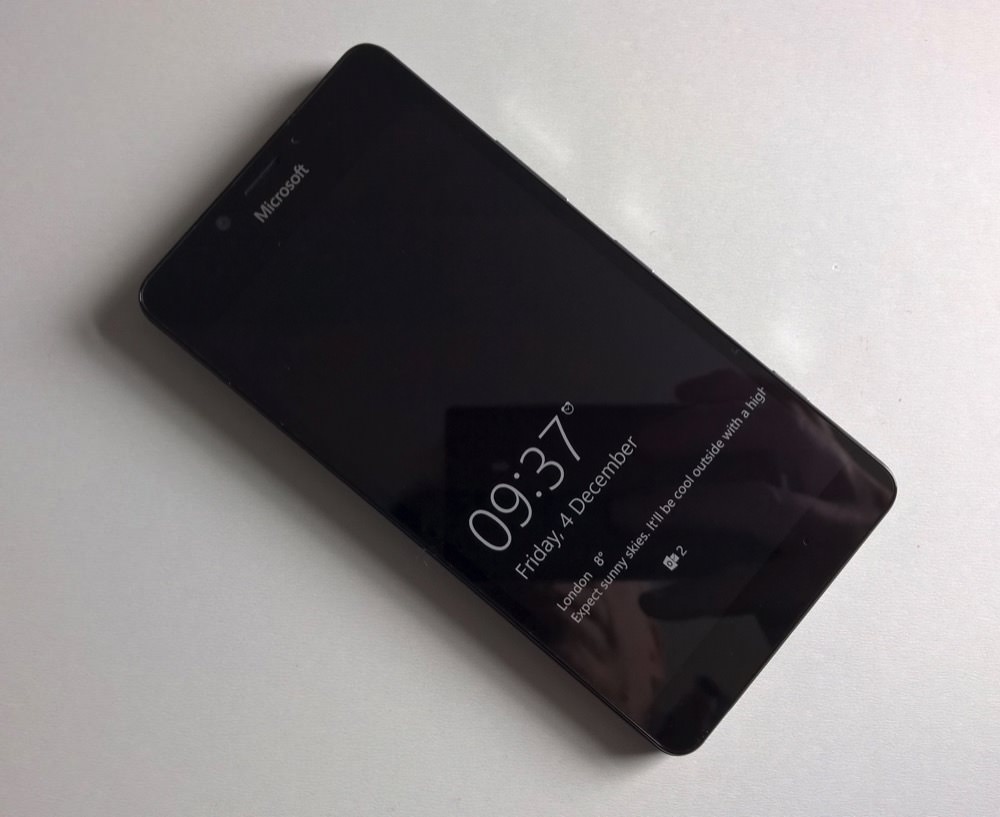
Cutting edge specs AND flexible?
The Lumia 950 sits well alongside its competition, including the iPhone 6s, the Galaxy S6 and Sony Xperia Z5 - and, for once in the Windows (mobile) world, the specifications are right up there. A Snapdragon 808 processor, 3GB of RAM (which is a lot for Windows 10 Mobile), 32GB internal storage plus that microSD capability. Then add in NFC, fast LTE, Qi wireless charging and compatibility with Qualcomm’s Quick Charge 2.0, all for a price point that's approaching the low £400s (inc VAT) on the street.
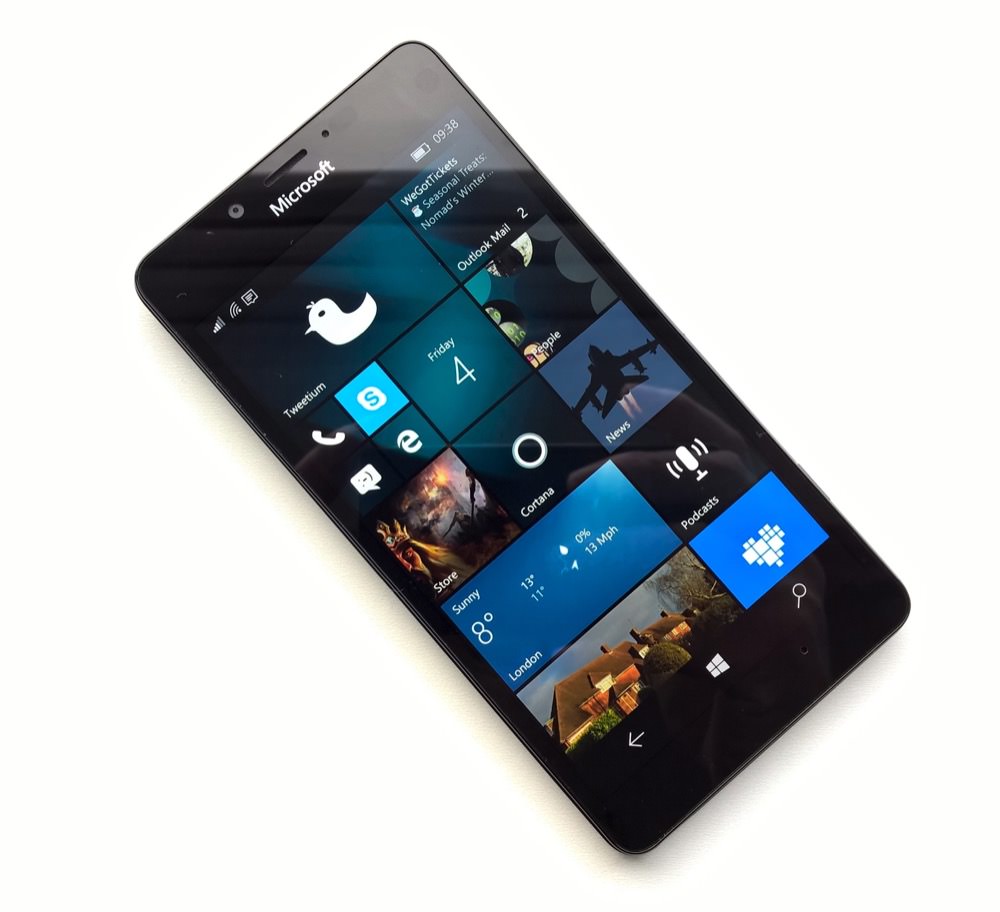
Regular readers will know that for years I’ve been a fan of hardware that allows the battery to be swapped - so many regular users hit issues with under-performing, degraded batteries after a couple of years (or after an accident). Being able to simply buy a new battery and pop it in is a huge boon. Add in the potential flexibility (if you’re an uber geek or road warrior) to keep a charged spare in the car glove box or briefcase and your smartphone effectively gets a new lease of life. Facilitating this, the whole back section of the 950 pops off, showing a vertical-format 3000mAh battery (iPhone-style, though of course you're not supposed to ever see the cell in that!) and a two layer slot arrangement up on the top left of the phone, with the nano-SIM sprung underneath, a microSD slot (unsprung) on top, and with clearance to be able to swap cards without powering down (though the usual caveats apply about safely unmounting the card in Storage Sense first).

Unlike the 950 XL, the Lumia 950's back cover fits very snugly indeed - you'll think you're going to break it the first time you try to lever it all the way off. In situ, you'd think the phone was all one piece, if it weren't for the glass-plastic border and the small notch to get your finger-nail in for back removal. There are no creaks, no worries over construction. We're expecting third party backs in for review imminently and if they fit as well as the Microsoft original then the result is going to be spectacular. Watch this space.
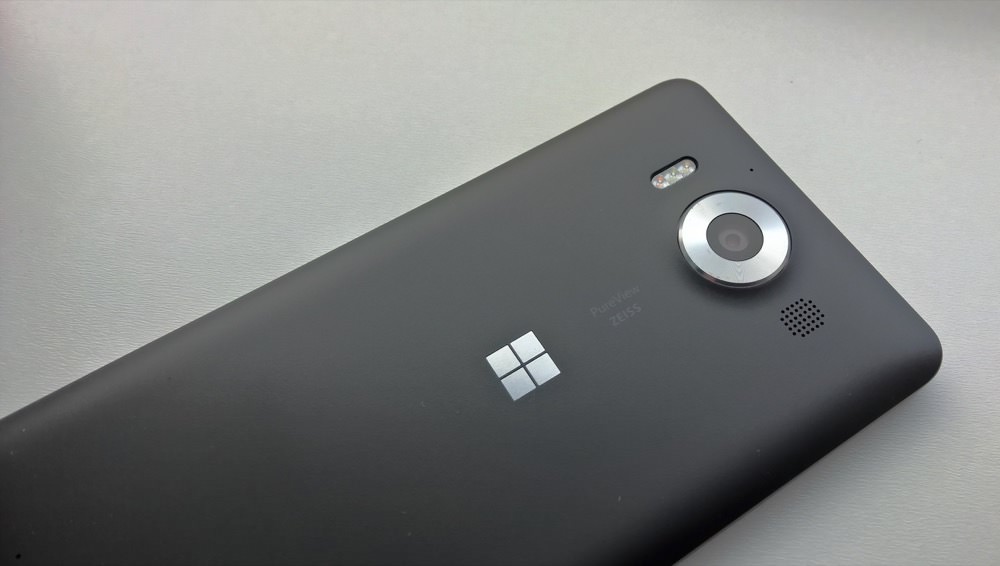
Components
The largish rectangular camera here is disguised with a circular surround and this seems to divide opinions. It's finely grooved aluminium and picks up scratches rather easily, but then I rather like the styling and the camera glass itself is recessed by a millimetre, so the protection for the part that matters is excellent. Off to one side, the triple-LED flash is also recessed by a millimetre and there's no direct light path from LEDs to the edges of the camera glass, something which sometimes causes issues in other phones.
Next to the camera is the grille for the mono speaker. This is acceptably loud but relatively tinny. There simply isn't room for a decent speaker chamber on these modern phones, at least not for positioning on the back, so the bass is almost non-existent. Having said that, it's easily good enough for the spoken word, i.e. sat-nav, podcasts, speakerphone duties, and so on.
The 5.2" QHD screen is cutting edge, at 564ppi - that's high but remember that this is AMOLED and that there's a pentile matrix, so the actual number of resolvable red and blue pixels across the display is only half that number. Regardless, it's easily high enough that I can't see pixels or fuzziness of any kind. There's also the usual ClearBlack Display polarisers, sunlight readability enhancements at the pixel level, Glance screen, Gorilla Glass 3, and you can tweak its colour profile in Windows 10 Mobile's Settings, as we've come to expect in the best Lumias. I found that that contrast was better than the display on the Lumia 950 XL (by only a percent or so, but still...) and put this down to a combination of the increased pixel density plus the different level of Gorilla Glass.
(I did note that GSMArena's detailed display testing showed the Lumia 950 screen to have calibration-class colour accuracy, perfect contrast and excellent sunlight performance.)
I did find the display a little colder and more neutral than I'm used to with AMOLED, but everything seemed tuned perfectly when set to 'Vivid'. As usual with my Lumias, where available I set Glance to 'always on' and as usual there's no significant drop in battery life. Just set and forget, and this remains a distinguishing factor and unique selling point for the Windows Phone and Windows 10 Mobile handsets.
Starting up Windows 10 Mobile
The startup sequence, restoring from a previous backup and use over the first few hours are smooth enough as long as you have a little patience. The usual Wi-fi setup, language selection screens, and so on, are well known by now and Windows 10 Mobile Build 10586 is pretty stable. However, there's still not enough explanation, in my opinion, for the way the first half hour of the new buyer's experience will be peppered by live tiles and applications which aren't 100% available, essentially, as they update and install in the background. I switched over to the Store application quickly and counted over 40 applications, which install two at a time, though at a fairly low priority in the operating system. So a new user wouldn't notice a sluggish phone, especially given the mighty Snapdragon 810 processor - but I'd still like an initial pop-up explaining what's happening.
Even worse is when a user opts to 'Restore' from a previous Windows Phone backup. Even after the basic restore of user data, all third party applications are left queued in the Store in the same way. Add both sets of installs together and, even on the fast chipset here, we're looking at least an hour of waiting before everything's installed and working. I know why all this needs to happen and it's cool that the phone can at least be used during this time, but a permanent toast or similar reminder need to be left up until everything's settled down, I contend.
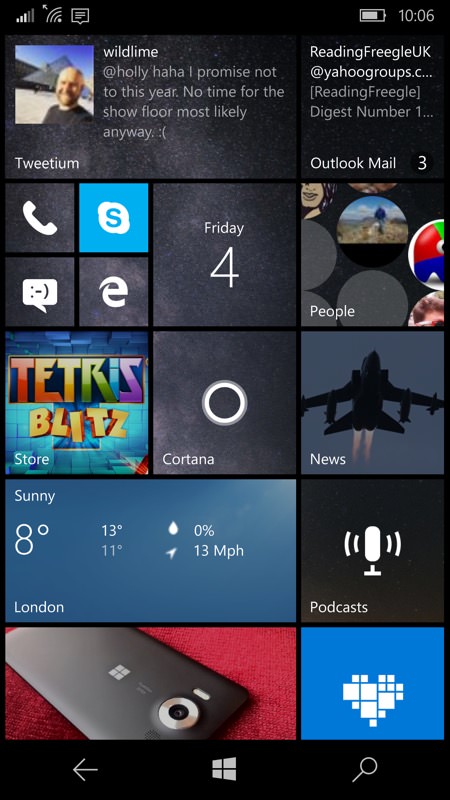
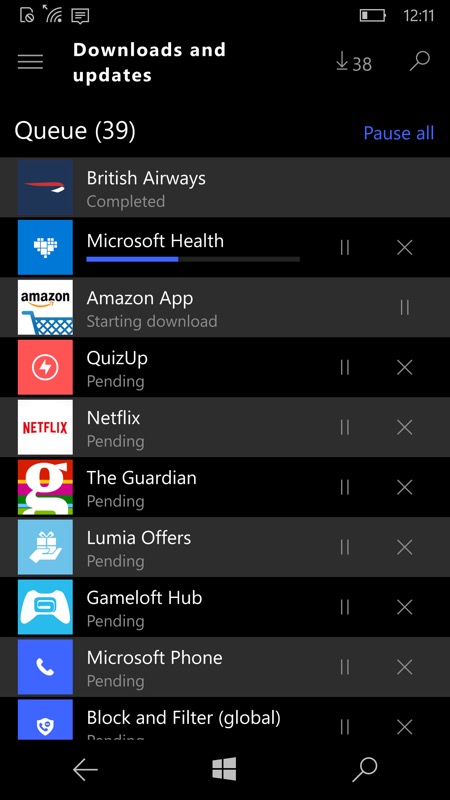
Getting set up on the Lumia 950 - there's a 'Show more tiles' toggle in Settings, but on the 5.2" screen I think that the default layout ('triple wide') works best; (right) the backlog of updates that the phone has to work through after being turned on for the first time!
Once running, signed into Microsoft's cloud, and with all apps and updates under your belt, the Lumia 950 runs beautifully. Well, I say that - nothing is really any different, complete with the odd bug and quirk here and there, to the same Insiders Build on the likes of the Lumia 830, 930 and 1520 - it's a work in progress, as is Windows 10 on the desktop, perennially up for updates and patches now. But the point is that there are precisely zero stutters. Games which struggled a little with frame rate on older Lumias ran smooth as silk. My favourite International Snooker Pro is a good test case. On the the Snapdragon 400-powered Lumia 830 it's essentially unplayable, even with the rendering quality turned down, on the Lumia 930 it works some of the time but I've lost count of the number of times some background process or agent slows the frame rate by a factor of two and the balls lurch around drunkenly. On the Lumia 950, the game is perfect, with high resolution renders and action as smooth as on the best Android smartphones. Obviously, there's more testing needed after weeks and months of cruft and daily use have taken their toll, but things look good so far.
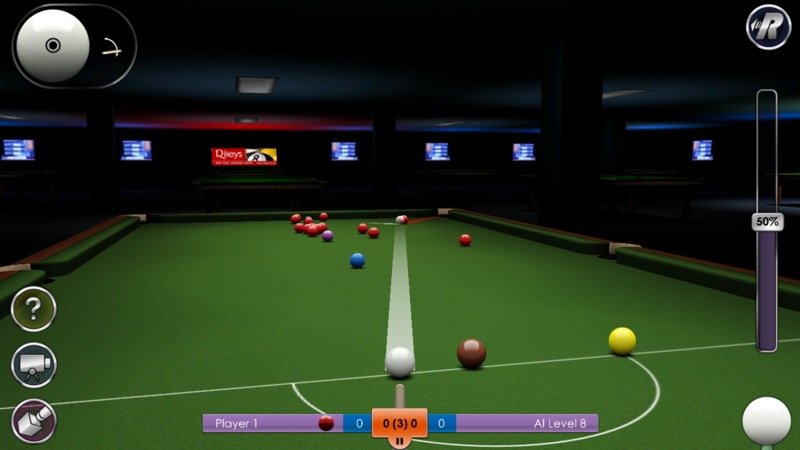
A true computer
Although not to the same extent as the Lumia 950 XL (in terms of Office), the 950 is also a true mobile computer, as you’d expect with ‘Windows 10 Mobile’ as its OS out of the box. Complete with a file system and File manager application, Type C-hosted USB 3.1 (you can hook up hard drives, memory sticks, and so on, of which more in a future tutorial), Microsoft Office (shown below), Microsoft Outlook, the new Edge browser, and evolutions of some Nokia favourites from the past, including Windows 10 Maps with the 100% offline worldwide navigation, still a unique selling point despite Google Maps' recent steps in this direction.


Plus ‘Continuum’, of course, covered much on these pages, plugging in a large-screened monitor as a secondary display via the optional Microsoft Display Dock, and hooking up a mouse and keyboard (also wired directly or via Bluetooth). Any universal applications (Office, Outlook, Maps, Photos, Groove Music, and many, many more) are then able to take over the extra display at its native resolution as if you were using a traditional Intel-powered processor inside a PC case. It's a neat trick and deserves its own review coverage - not least because we don't have the Display Dock in the UK yet as I write this and because neither of my wireless TVs support Miracast. Sigh. So I'll come back to Continuum another time.
Imaging
Nokia/Microsoft sat at the top of the imaging tree in my eyes with the astonishingly good (and annoyingly slow and quirky) Lumia 1020, complete with Xenon flash and huge sensor, but the competition, in the shape of the LG G4, Galaxy S6 and iPhone 6s have arguably caught up in terms of everyday imaging. The Lumia 950 manages to match the late 2015 competition and then eke out a little extra, in the shape of triple-LED flash, of which more in a moment - this doesn't claim to win out against Xenon on a proper camera, but it does get remarkably close when combined with the large f/1.9 aperture and 2015 sensor. The LEDs are all coloured and 'tuned', with the camera's electronics firing them in response to what it detects about the scene being shot.
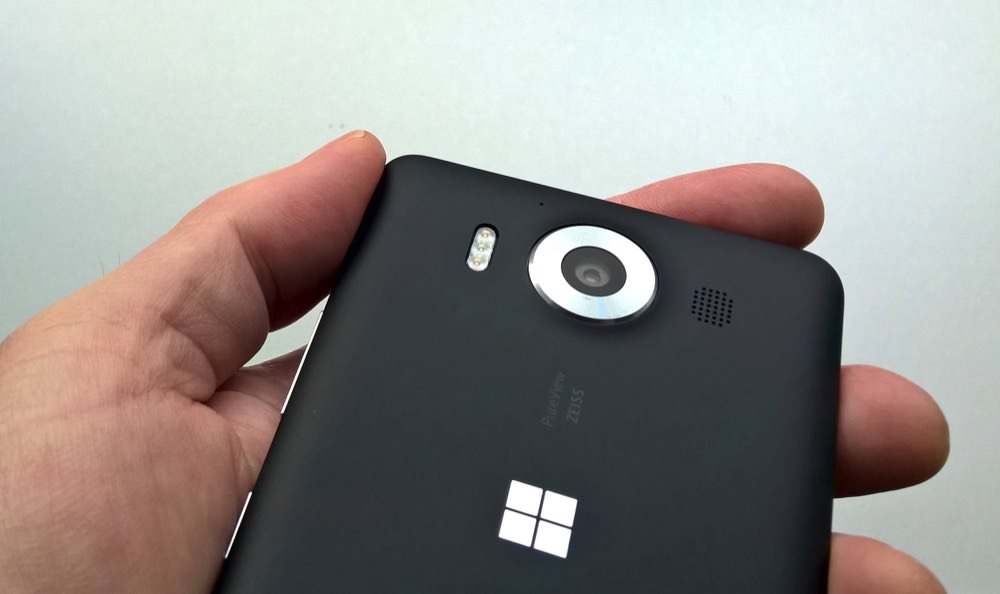
Well, that's the theory, anyway. For still life shots it works brilliantly, with results that have the same colouration whether lit in daylight or by this super-natural LED flash unit. When snapping human subjects, the multiple flash sequence used tended to make people blink on the first flash and so I’ve now got lots of photos of faces with eyes squinting or completely closed. Hopefully the timing and intensity of these flashes can be tweaked in a future update.

My 80-year-old dad, this photo is typical of the dozens I've taken with the triple-LED flash on. Eyes automatically squinting after the initial 'probing' LED pulse - Microsoft needs to analyse lighting and colours at focus time, I think, then leave a single LED pulse for taking the photo - and worry about removing 'red eye' later on!
So, we have a potentially industry-leading flash, a large aperture and optics, 'fifth generation OIS', a large 1/2.4" sensor, and a fast processor to back it all up. Natively, 16:9 shots are at 16MP, though I preferred to run in 8MP oversampled mode, since this corresponds to a 4K monitor, and so why would anyone need higher resolution? It works really well, plus there’s the familiar PureView ‘zoom’, effectively smart cropping into the sensor resolution to lose oversampling, but maintaining the full 8MP detail. In fact, as with other 2015 flagship cameras, there’s enough spare image processing power to add a couple of levels of interpolated zoom too, taking the degree of usable zoom up to 4x, though the results can then be quite ugly at the pixel level and I do wish there was at least an option to stop the interface zooming beyond 1:1 on the sensor.

Playing with longer exposures in the manual mode...
Well, you can leave it on all the time if you're shooting still life - shooting people is another matter - people move between the shots, but also you'll be wanting to review snaps quickly, to check expressions, and the 'Adding finishing touches' background rendering is then frustratingly slow, even on the new processors here. More on this in part two of this review!
Rich Capture, blending automatically-taken multiple shots of the same scene, works brilliantly when it’s available, though it's worth noting that on older Lumias this was an on-off setting. With the Lumia 950 range, Microsoft added intelligence so that it doesn’t kick in if the algorithms in Camera don’t think you’ll get any benefit from the feature. This can be a little disconcerting for users of older Lumias, though the big benefit is that more efficient use of the phone’s storage and other resources. And, as a result, you can leave Rich Capture set to its 'Automatic/On' setting all the time, i.e. you don't have to think about it when taking a photo, which is a huge boon if you trust the algorithms.

Notice the new 'A' indicator on the Rich Capture 'magic wand', indicating that even when 'on', it's really on 'automatic'. Which is fine, it's less to think about when shooting. Ditto the auto-flash. Just leave the Camera algorithms to decide what to do!
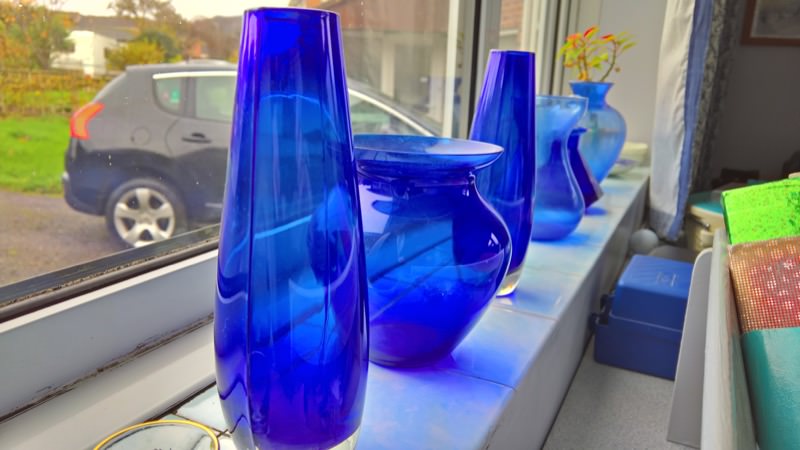
A typical Rich Capture, helping bring out the colour in these vases....
In theory there’s a new mode too, ‘Dynamic Exposure’, using two exposures in poorish light to help freeze moving subjects while keeping the background at higher quality. This didn’t help much in my tests (I did several), though it’s early days, both for the review device and for Windows 10 Camera, which is now being updated on a weekly basis.
Windows Hello. Hello?
If there's any one big trend in smartphones in 2015, it's been the addition of biometrics - using some physical aspect of your body to authenticate you - to unlock you quickly without you having to enter a PIN, meaning that it's much more practical to leave your device 'locked' all the time, away from fellow workers, family member and various miscreants.
And, potentially, to act as authentication should you wish to buy something in a physical shop in the future - we've seen Apple Pay, Google Pay, Samsung Pay (and others), but not - yet - Microsoft Pay, though surely something like this can't be far off? As it is, biometrics are only used here for in-app and Store purchases.
For the Lumia 950 range, Microsoft has chosen to go with iris recognition rather than fingerprint scanning. The resulting ‘Windows Hello’ system does work - you power up the lockscreen, your iris(es) are scanned and then you’re authenticated and in, bypassing the need to enter a PIN (for example).
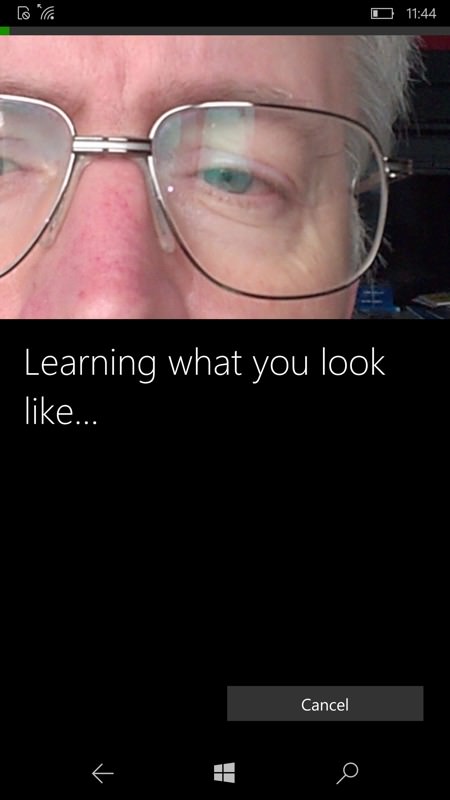
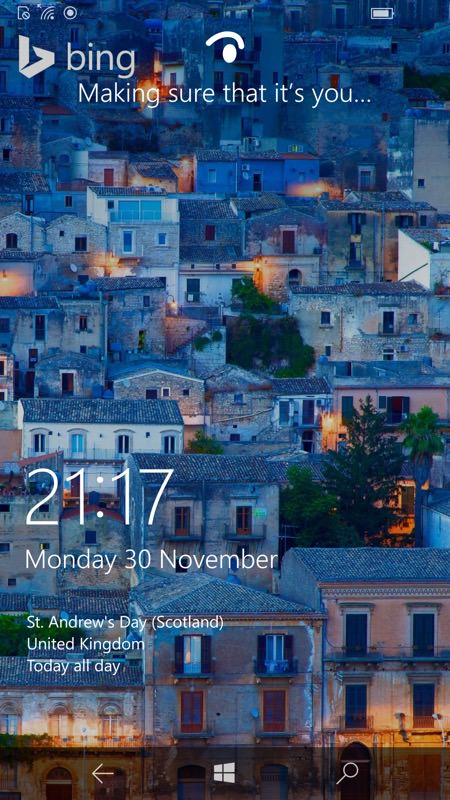
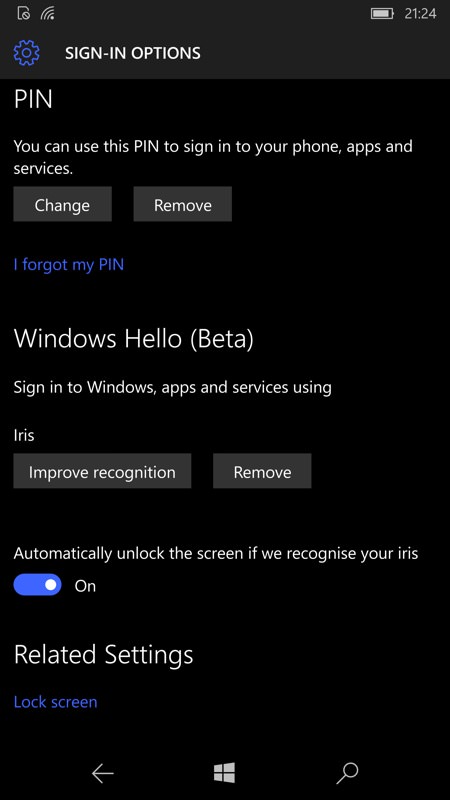
However, in real world use, Windows Hello takes much longer to work (typically around two seconds, even after you’ve lifted the phone up to your gaze) and (understandably) doesn't work at all well if you wear glasses (like me) - and yes, I did try the 'Improve recognition' function. Given that competing phones with fingerprint scanners can unlock the device in a tiny fraction of a second (think instantaneously) even while you’re lifting the device out of your pocket or up to your gaze, the iris recognition feels very slow indeed.
I ended up setting the 'Sign in' options to '15 minutes', i.e. the maximum time-out, after which you have to authenticate again - this would be a decent compromise in a typical office or travel situation, though as I work at home most of the time, I just set it to 'never' and thus only have to worry about entering a PIN or taking off my glasses for the iris recognition when I want to buy something on the device.
Buttons and controls
The side buttons on the Lumia 950 are in a traditional layout, with volume and power separate, contrary to the somewhat bizarre/innovative/quirky combined cluster on the Lumia 950 XL. By necessity, the buttons are just loosely retained caps in the back cover's sides over the real (stub) buttons on the phone's body underneath, meaning that they can be moved slightly from side to side - though they don't rattle in daily use - just be aware that they're not as rock solid as on previous Lumias.
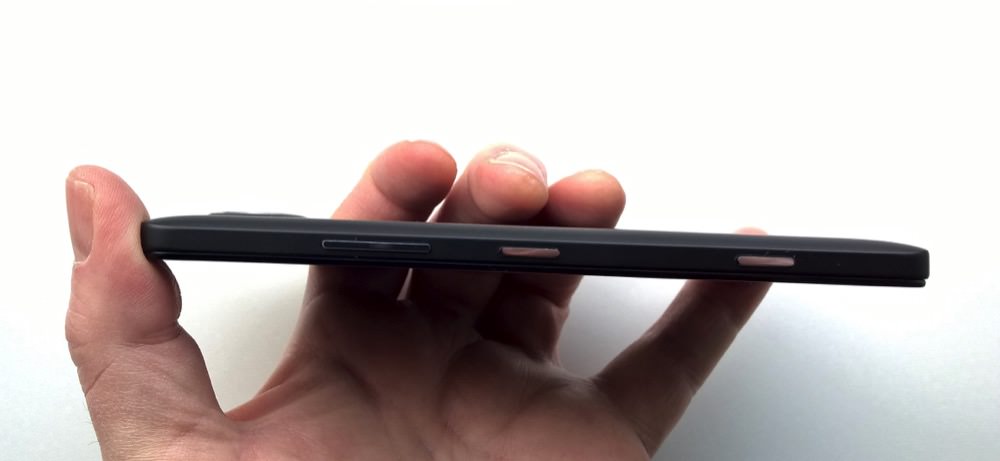
The main Windows Controls are are now virtual, following the modern trend across the industry and following successful use of the system on the budget Lumia 640 and 640 XL earlier this year. I hated them at first on those devices, but once you get used to the flick up from the bottom to hide or show the controls, the system really is more flexible. It allows the available display real estate to be larger when needed, such as viewing photos, watching a video, and so on. In addition you also don't get the annoying illuminated capacitive controls while watching something dark, though note that some games aren't yet fully Windows 10 Mobile-aware and don't let you dismiss the virtual controls - this will get fixed in time by the various developers.
Overall, the switch to virtual controls is positive - in my opinion. I'd have liked the top and bottom bezels each to be several millimetres smaller, but then there's a lot of tech under the hood and it's all got to live somewhere. My only criticism is that, having accepted the initial 'here's how to dismiss and bring back' the controls prompt/advice, there's nowhere in the settings to return to in order to, for example, disable the system (e.g. for a relative, who might get confused!)
Battery, power and connections
We'll come back to Continuum, of course, when we get hands on the Display Dock, but there's also hooking up via USB to desktops. In this case just Windows PCs, since Nokia's old Mac connection software doesn't seem to recognise the new Lumias. It's not clear whether this is because of the new models and IDs or whether this is because of the new cables and protocols (USB Type C and USB 3.1) but either way a software update for the Mac utility is needed and I can't see Microsoft rushing to make that happen. Sadly. So every graphic in our features has had to come via OneDrive.
The Type C connector is new for the 950 and 950 XL, of course, and is the way the industry is going. This is absolutely fine and well done to Microsoft for also going the extra mile to put in Qualcomm Quick Charge 2.0 compatibility - get a Lumia 950 and 950 XL and you're set for the next few years, in theory. In the short term it means lots of 'oh darned, I need something with a Type C connector' moments when out and about, but these will ease as the whole phone world transitions through 2016.
Battery life on the 950 seems good so far, for my use in all 'dark' mode (this being AMOLED), I've easily gotten through a day, plus the Qi charging means that it's so tempting just to place it on one of my pads when not in use, making sure that it's always topped up. Yes, yes, I know, I'll have to report on long term use when on a really 'heavy' mobile day out in due course. That'll be part of a long term test. Do note also that with each new build of the OS and its apps, the battery life should improve, so it can only get better still.

Verdict
This is only part 1 of our review, of course, there's the imaging part still to come - and that's a core unique selling point here. As you'll have seen from the initial comparison though, this is looking very good, adding to the impression hinted at in my enthusiasm right at the top - the Lumia 950 is something of a Holy Grail device for anyone who's been following Nokia and then Windows Phone under Microsoft for the last decade. Microsoft did say back in July that it was going to release new phones for "Windows Phone fans" and the 950 bundles in everything we've been asking Nokia and then Microsoft for, from the battery, charging and storage arrangements to Glance and even better imaging.
That it comes in two form factors means that we have choice too, though the 950 feels absolutely perfect to me, in terms of width and thickness - the extra 5mm in girth for the 950 XL is tricky to stomach unless you have large hands or are resigned to the phone always being a two-handed device. The vanilla 950 is just about useable with one hand without fear or dropping the phone - reaching hamburger menus and swiping the Action Center down are the biggest hassles with my thumb in this use case.
Although not perfect or bug-free yet by any stretch of the imagination, I'm giving a pass to Windows 10 Mobile - it's a known quantity and anyone who's stuck with Windows Phone so far has probably already settled on a range of applications that work well for them. And Microsoft will be patching and tweaking the OS for many months, if not years, just as on the desktop - this is Windows 10 'as a service'. So every week your phone will hopefully work better than it did the previous week!
Of course, from the point of view of someone with an iPhone 6 (onwards) or Galaxy S6 (onwards) or Sony Xperia Z5 (onwards, you get the idea, I could extend this list quite a way), the Lumia 950 hardware isn't as exciting as it perhaps needs to be, plus it's absolutely true that the third party application ecosystem for Windows 10 Mobile has gaping holes in it when compared to iOS and Android.
Microsoft's aim though, as already discussed, isn't to sell tens of millions of these things. The Lumia 950 XL is their 'Nexus', their demonstration device of how Windows 10 can work in a mobile context. So Office, Outlook, Continuum, Hello, and so on. The hardware itself is very capable but there's no real 'halo' effect.
Watch this space for further review parts and features.
Thanks very much to Clove for the loan of the retail devices used in these features!
Reviewed by Steve Litchfield at
